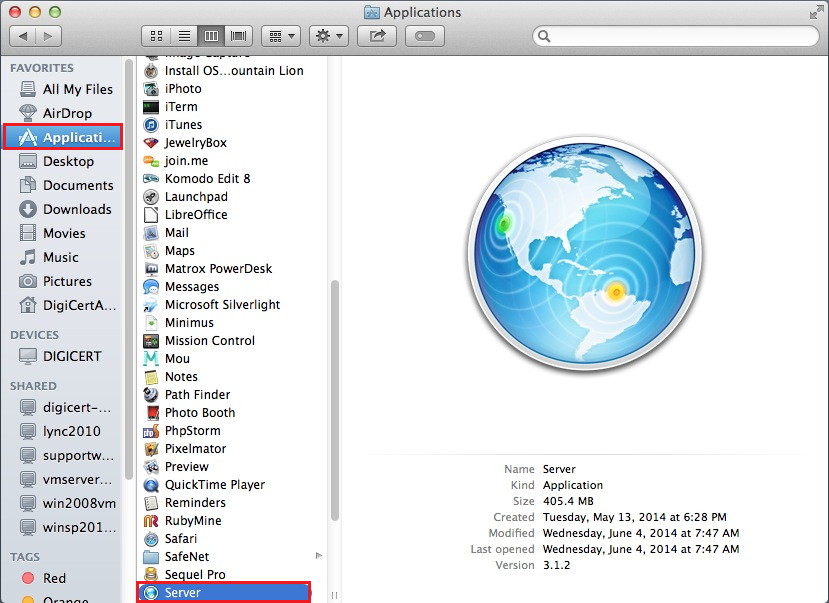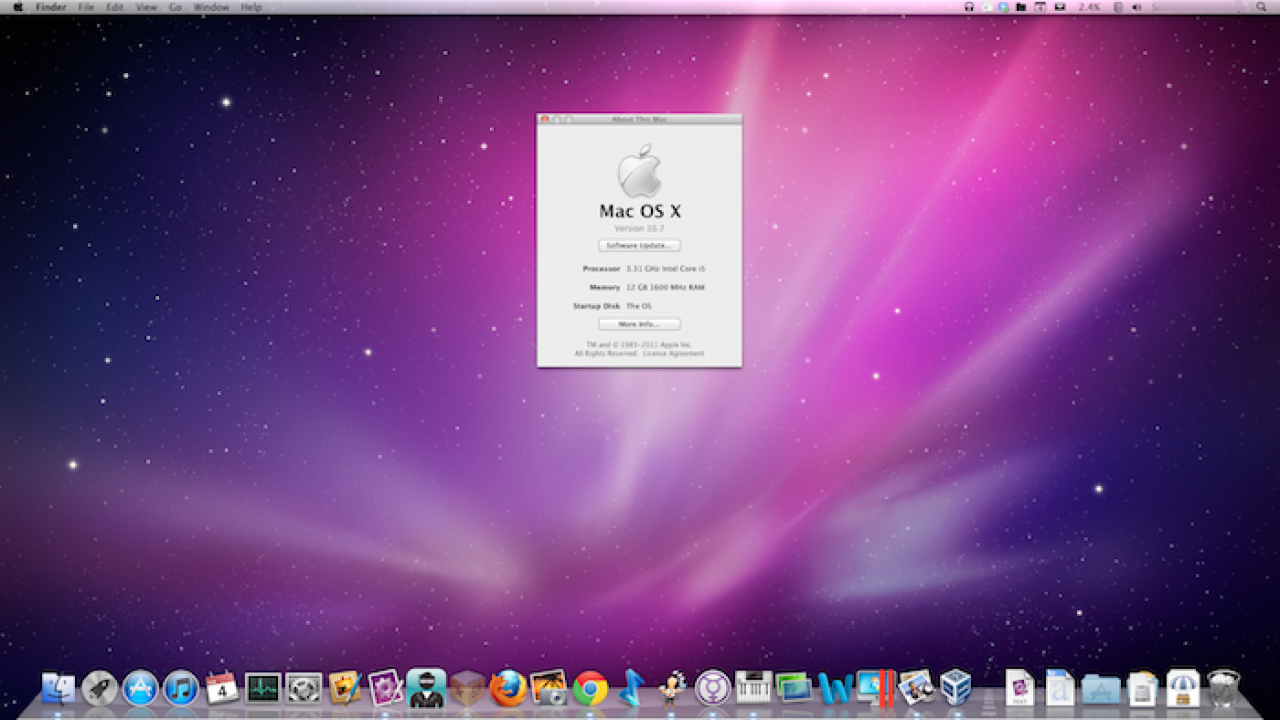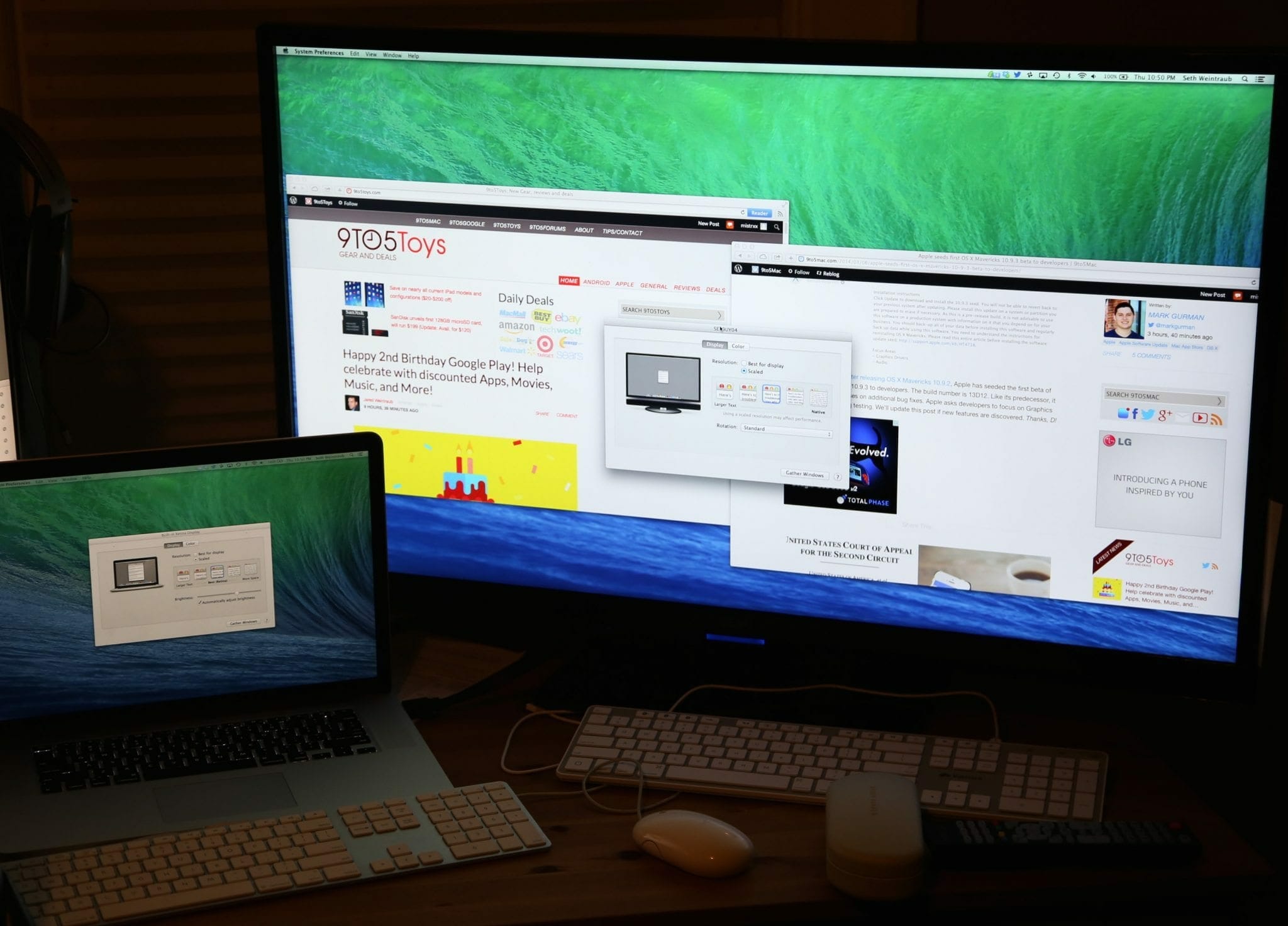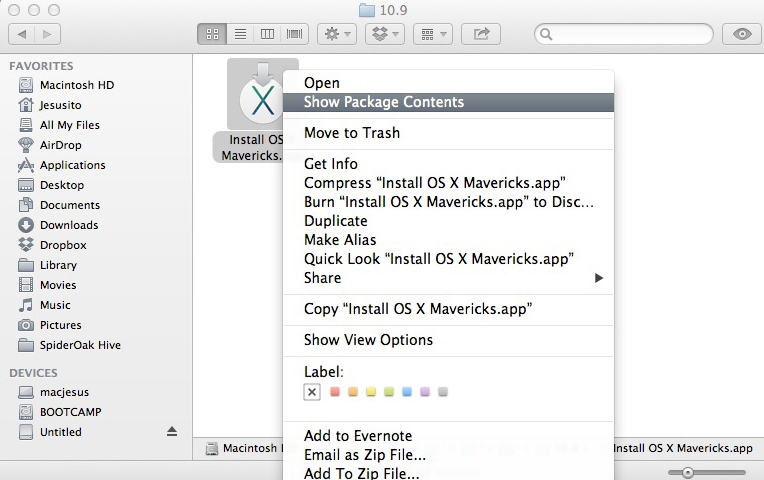Mac desktop app (macOS 10.9 or greater) Download for Mac. Download for Windows. Legacy installer for Windows XP or macOS 10.6 to 10.8. Getting started guide. Download of MOSEK version 9.2.40 (March 10, 2021) - Stable. Mac (64 bit x86) SHA256: MAC OS 10.9 or newer: NuGet (64 bit x86). The Default Installer for Windows.
Quickstart
- Install Xcode and the Xcode Command Line Tools
- Agree to Xcode license in Terminal:
sudo xcodebuild -license - Install MacPorts for your version of the Mac operating system:
Installing MacPorts
MacPorts version 2.6.4 is available in various formats for download and installation (note, if you are upgrading to a new major release of macOS, see the migration info page):
- 'pkg' installers for Big Sur, Catalina, Mojave, and High Sierra, for use with the macOS Installer. This is the simplest installation procedure that most users should follow after meeting the requirements listed below. Installers for legacy platforms Sierra, El Capitan, Yosemite, Mavericks, Mountain Lion, Lion, Snow Leopard, Leopard and Tiger are also available.
- In source form as either a tar.bz2 package or a tar.gz one for manual compilation, if you intend to customize your installation in any way.
- Git clone of the unpackaged sources, if you wish to follow MacPorts development.
- The selfupdate target of the port(1) command, for users who already have MacPorts installed and wish to upgrade to a newer release.
Checksums for our packaged downloads are contained in the corresponding checksums file.
The public key to verify the detached GPG signatures can be found under the attachments section on jmr's wiki page. (Direct Link).
Please note that in order to install and run MacPorts on macOS, your system must have installations of the following components:
- Apple's Xcode Developer Tools (version 12.2 or later for Big Sur, 11.3 or later for Catalina, 10.0 or later for Mojave, 9.0 or later for High Sierra, 8.0 or later for Sierra, 7.0 or later for El Capitan, 6.1 or later for Yosemite, 5.0.1 or later for Mavericks, 4.4 or later for Mountain Lion, 4.1 or later for Lion, 3.2 or later for Snow Leopard, or 3.1 or later for Leopard), found at the Apple Developer site, on your Mac operating system installation CDs/DVD, or in the Mac App Store. Using the latest available version that will run on your OS is highly recommended, except for Snow Leopard where the last free version, 3.2.6, is recommended.
Apple's Command Line Developer Tools can be installed on recent OS versions by running this command in the Terminal:
Older versions are found at the Apple Developer site, or they can be installed from within Xcode back to version 4. Users of Xcode 3 or earlier can install them by ensuring that the appropriate option(s) are selected at the time of Xcode's install ('UNIX Development', 'System Tools', 'Command Line Tools', or 'Command Line Support').
- Xcode 4 and later users need to first accept the Xcode EULA by either launching Xcode or running:
- (Optional) The X11 windowing environment for ports that depend on the functionality it provides to run. You have multiple choices for an X11 server:
- Install the xorg-server port from MacPorts (recommended).
- The XQuartz Project provides a complete X11 release for macOS including server and client libraries and applications. It has however not been updated since 2016.
- Apple's X11.app is provided by the 'X11 User' package on older OS versions. It is always installed on Lion, and is an optional installation on your system CDs/DVD with previous OS versions.
macOS Package (.pkg) Installer
The easiest way to install MacPorts on a Mac is by downloading the pkg or dmg for Big Sur, Catalina, Mojave, High Sierra, Sierra, El Capitan, Yosemite, Mavericks, Mountain Lion, Lion, Snow Leopard, Leopard or Tiger and running the system's Installer by double-clicking on the pkg contained therein, following the on-screen instructions until completion.
This procedure will place a fully-functional and default MacPorts installation on your host system, ready for usage. If needed your shell configuration files will be adapted by the installer to include the necessary settings to run MacPorts and the programs it installs, but you may need to open a new shell for these changes to take effect.
Apple Mac Os X 10.9 Installer Download
The MacPorts 'selfupdate' command will also be run for you by the installer to ensure you have our latest available release and the latest revisions to the 'Portfiles' that contain the instructions employed in the building and installation of ports. After installation is done, it is recommended that you run this step manually on a regular basis to to keep your MacPorts system always current:
At this point you should be ready to enjoy MacPorts!
Type 'man port' at the command line prompt and/or browse over to our Guide to find out more information about using MacPorts. Help is also available.
Source Installation
If on the other hand you decide to install MacPorts from source, there are still a couple of things you will need to do after downloading the tarball before you can start installing ports, namely compiling and installing MacPorts itself:
- 'cd' into the directory where you downloaded the package and run 'tar xjvf MacPorts-2.6.4.tar.bz2' or 'tar xzvf MacPorts-2.6.4.tar.gz', depending on whether you downloaded the bz2 tarball or the gz one, respectively.
- Build and install the recently unpacked sources:
- cd MacPorts-2.6.4
- ./configure && make && sudo make install
- cd ../
- rm -rf MacPorts-2.6.4*
These steps need to be perfomed from an administrator account, for which 'sudo' will ask the password upon installation. This procedure will install a pristine MacPorts system and, if the optional steps are taken, remove the as of now unnecessary MacPorts-2.6.4 source directory and corresponding tarball.

To customize your installation you should read the output of './configure --help | more' and pass the appropriate options for the settings you wish to tweak to the configuration script in the steps detailed above.
You will need to manually adapt your shell's environment to work with MacPorts and your chosen installation prefix (the value passed to configure's --prefix flag, defaulting to /opt/local):
- Add ${prefix}/bin and ${prefix}/sbin to the start of your PATH environment variable so that MacPorts-installed programs take precedence over system-provided programs of the same name.
- If a standard MANPATH environment variable already exists (that is, one that doesn't contain any empty components), add the ${prefix}/share/man path to it so that MacPorts-installed man pages are found by your shell.
- For Tiger and earlier only, add an appropriate X11 DISPLAY environment variable to run X11-dependent programs, as Leopard takes care of this requirement on its own.
Lastly, you need to synchronize your installation with the MacPorts rsync server:

Upon completion MacPorts will be ready to install ports!
It is recommended to run the above command on a regular basis to keep your installation current. Type 'man port' at the command line prompt and/or browse over to our Guide to find out more information about using MacPorts. Help is also available.
Mac Os X 10.9 Installer Download
Git Sources
If you are developer or a user with a taste for the bleeding edge and wish for the latest changes and feature additions, you may acquire the MacPorts sources through git. See the Guide section on installing from git.
Purpose-specific branches are also available at the https://github.com/macports/macports-base/branches url.
Alternatively, if you'd simply like to view the git repository without checking it out, you can do so via the GitHub web interface.
Selfupdate
If you already have MacPorts installed and have no restrictions to use the rsync networking protocol (tcp port 873 by default), the easiest way to upgrade to our latest available release, 2.6.4, is by using the selfupdate target of the port(1) command. This will both update your ports tree (by performing a sync operation) and rebuild your current installation if it's outdated, preserving your customizations, if any.
Other Platforms
Running on platforms other than macOS is not the main focus of The MacPorts Project, so remaining cross-platform is not an actively-pursued development goal. Nevertheless, it is not an actively-discouraged goal either and as a result some experimental support does exist for other POSIX-compliant platforms such as *BSD and GNU/Linux.
The full list of requirements to run MacPorts on these other platforms is as follows (we assume you have the basics such as GCC and X11):
- Tcl (8.4 or 8.5), with threads.
- mtree for directory hierarchy.
- rsync for syncing the ports.
- cURL for downloading distfiles.
- SQLite for the port registry.
- GNUstep (Base), for Foundation (optional, can be disabled via configure args).
- OpenSSL for signature verification, and optionally for checksums. libmd may be used instead for checksums.
Normally you must install from source or from an git checkout to run MacPorts on any of these platforms.
Help
Help on a wide variety of topics is also available in the project Guide and through our Trac portal should you run into any problems installing and/or using MacPorts. Of particular relevance are the installation & usage sections of the former and the FAQ section of the Wiki, where we keep track of questions frequently fielded on our mailing lists.
If any of these resources do not answer your questions or if you need any kind of extended support, there are many ways to contact us!
Sweet Home 3D application may run on Windows, Mac OS X 10.4 to macOS 11, Linux and Solaris.
Depending on whether Java is installed on you system or not, you may launch Sweet Home 3D
with Java Web Start or its installer.
Download Sweet Home 3D installer
Sweet Home 3D installer is available under two versions, both bundled with a private copy of Java:
- a free version available at SourceForge.net that comes with 100 pieces of furniture and 26 textures
- a paid version available on the Amazon App Store bundled with 1500 pieces of furniture and 418 textures.
| (version 6.5 - 77.1 MB) | (version 6.5.1 - 228 MB) |
Once downloaded, run the installation program and follow the instructions from the installation wizard.
Ensure that the latest version of the drivers of your video card is installed, to get the best performances in Sweet Home 3D. If you encounter some problems at Sweet Home 3D launch, please read the FAQ for additional information. |
Sweet Home 3D installer is available under two versions, both bundled with a private copy of Java:
- a free version available at SourceForge.net bundled with 100 pieces of furniture and 26 textures
- a paid version available on the Microsoft Store, automatically updated and bundled with 1500 pieces of furniture and 418 textures.

| (version 6.5 - 77.1 MB) | (version 6.5.1 - 244 MB) |
Once downloaded, run the installation program and follow the instructions from the installation wizard.

Ensure that the latest version of the drivers of your video card is installed, to get the best performances in Sweet Home 3D. If you encounter some problems at Sweet Home 3D launch, please read the FAQ for additional information. |
Sweet Home 3D installer is available under two versions:
- a free version available at SourceForge.net bundled with 100 pieces of furniture and 26 textures
- a paid version available on the Mac App Store, sandboxed, automatically updated and bundled with 1500 pieces of furniture and 418 textures.
| (version 6.5 - 75 MB) | (version 6.5.1 - 270 MB) |

To customize your installation you should read the output of './configure --help | more' and pass the appropriate options for the settings you wish to tweak to the configuration script in the steps detailed above.
You will need to manually adapt your shell's environment to work with MacPorts and your chosen installation prefix (the value passed to configure's --prefix flag, defaulting to /opt/local):
- Add ${prefix}/bin and ${prefix}/sbin to the start of your PATH environment variable so that MacPorts-installed programs take precedence over system-provided programs of the same name.
- If a standard MANPATH environment variable already exists (that is, one that doesn't contain any empty components), add the ${prefix}/share/man path to it so that MacPorts-installed man pages are found by your shell.
- For Tiger and earlier only, add an appropriate X11 DISPLAY environment variable to run X11-dependent programs, as Leopard takes care of this requirement on its own.
Lastly, you need to synchronize your installation with the MacPorts rsync server:
Upon completion MacPorts will be ready to install ports!
It is recommended to run the above command on a regular basis to keep your installation current. Type 'man port' at the command line prompt and/or browse over to our Guide to find out more information about using MacPorts. Help is also available.
Mac Os X 10.9 Installer Download
Git Sources
If you are developer or a user with a taste for the bleeding edge and wish for the latest changes and feature additions, you may acquire the MacPorts sources through git. See the Guide section on installing from git.
Purpose-specific branches are also available at the https://github.com/macports/macports-base/branches url.
Alternatively, if you'd simply like to view the git repository without checking it out, you can do so via the GitHub web interface.
Selfupdate
If you already have MacPorts installed and have no restrictions to use the rsync networking protocol (tcp port 873 by default), the easiest way to upgrade to our latest available release, 2.6.4, is by using the selfupdate target of the port(1) command. This will both update your ports tree (by performing a sync operation) and rebuild your current installation if it's outdated, preserving your customizations, if any.
Other Platforms
Running on platforms other than macOS is not the main focus of The MacPorts Project, so remaining cross-platform is not an actively-pursued development goal. Nevertheless, it is not an actively-discouraged goal either and as a result some experimental support does exist for other POSIX-compliant platforms such as *BSD and GNU/Linux.
The full list of requirements to run MacPorts on these other platforms is as follows (we assume you have the basics such as GCC and X11):
- Tcl (8.4 or 8.5), with threads.
- mtree for directory hierarchy.
- rsync for syncing the ports.
- cURL for downloading distfiles.
- SQLite for the port registry.
- GNUstep (Base), for Foundation (optional, can be disabled via configure args).
- OpenSSL for signature verification, and optionally for checksums. libmd may be used instead for checksums.
Normally you must install from source or from an git checkout to run MacPorts on any of these platforms.
Help
Help on a wide variety of topics is also available in the project Guide and through our Trac portal should you run into any problems installing and/or using MacPorts. Of particular relevance are the installation & usage sections of the former and the FAQ section of the Wiki, where we keep track of questions frequently fielded on our mailing lists.
If any of these resources do not answer your questions or if you need any kind of extended support, there are many ways to contact us!
Sweet Home 3D application may run on Windows, Mac OS X 10.4 to macOS 11, Linux and Solaris.
Depending on whether Java is installed on you system or not, you may launch Sweet Home 3D
with Java Web Start or its installer.
Download Sweet Home 3D installer
Sweet Home 3D installer is available under two versions, both bundled with a private copy of Java:
- a free version available at SourceForge.net that comes with 100 pieces of furniture and 26 textures
- a paid version available on the Amazon App Store bundled with 1500 pieces of furniture and 418 textures.
| (version 6.5 - 77.1 MB) | (version 6.5.1 - 228 MB) |
Once downloaded, run the installation program and follow the instructions from the installation wizard.
Ensure that the latest version of the drivers of your video card is installed, to get the best performances in Sweet Home 3D. If you encounter some problems at Sweet Home 3D launch, please read the FAQ for additional information. |
Sweet Home 3D installer is available under two versions, both bundled with a private copy of Java:
- a free version available at SourceForge.net bundled with 100 pieces of furniture and 26 textures
- a paid version available on the Microsoft Store, automatically updated and bundled with 1500 pieces of furniture and 418 textures.
| (version 6.5 - 77.1 MB) | (version 6.5.1 - 244 MB) |
Once downloaded, run the installation program and follow the instructions from the installation wizard.
Ensure that the latest version of the drivers of your video card is installed, to get the best performances in Sweet Home 3D. If you encounter some problems at Sweet Home 3D launch, please read the FAQ for additional information. |
Sweet Home 3D installer is available under two versions:
- a free version available at SourceForge.net bundled with 100 pieces of furniture and 26 textures
- a paid version available on the Mac App Store, sandboxed, automatically updated and bundled with 1500 pieces of furniture and 418 textures.
| (version 6.5 - 75 MB) | (version 6.5.1 - 270 MB) |
For the free version, downloadSweetHome3D-6.5-macosx.dmgfor Mac OS X 10.8 to macOS 11, orSweetHome3D-6.5-macosx-10.4-10.9.dmg(19.5 MB) for Mac OS X 10.4 to 10.8. Then double-click on the file you'll have downloaded, and runSweet Home 3Dapplication found in the opened folder. If the system refuses to launch Sweet Home 3D for security reasons, click on its application icon while maintaining the ctrl key pressed, and choose Open in the contextual menu that will appear. To install Sweet Home 3D, drag and drop the application in the folder of your choice.
If you don't want to care about the Java configuration of your system, click on one of the following links to download an all-in-one Sweet Home 3D installer bundled with Java:
| Windows installer | - | Mac OS X installer | - | Linux 32-bit installer | - | Linux 64-bit installer |
| (77.1 MB) | (75 MB) | (70.9 MB) | (67.6 MB) |
| Run the downloaded installation program, and follow the instructions from the installation wizard. |
Under Mac OS X 10.4 to 10.8, download this installer (19.5 MB). |
Uncompress the downloaded file and run SweetHome3D application found in the uncompressed directory, possibly using this tip to launch it with a double click under Ubuntu. To install Sweet Home 3D, move the uncompressed directory in the one of your choice or read this article to create a launcher (see also this subject in the forum). |
Whatever your system is, ensure that the latest version of the drivers of your video card is installed, to get the best performances in Sweet Home 3D. |
Download Sweet Home 3D with Java Web Start
If Java version 8 is installed on your system, click on the following link to download and launch Sweet Home 3D version 6.5 (19.5 MB):
| Launch Sweet Home 3D with Java Web Start |
| Clicking on the previous link will automatically download and launch Sweet Home 3D. |
If Sweet Home 3D loading doesn't start once you clicked on the previous link, click on the SweetHome3D.jnlp downloaded file while maintaining the ctrl key pressed, and choose Open in the contextual menu that will appear. |
Choose to open the SweetHome3D.jnlp downloaded file with javaws program that you'll find in the bin directory of the JRE (Java Runtime Environment). |
If, once started, the download of Sweet Home 3D files by Java Web Start is interrupted, please wait, download should continue after a while. |
Other downloads
Depending on your needs, you may also download the following files proposed in the Sweet Home 3D Download section on SourceForge.net:
| 3D models libraries | Each zipped file of the section SweetHome3D-models contains a double-clickable SH3F file describing additional 3D models created by contributors for the furniture catalog of Sweet Home 3D. Read Libraries of 3D models section for more information. |
| Textures libraries | Each zipped file of the section SweetHome3D-textures contains a double-clickable SH3T file describing additional textures created by contributors for the textures catalog of Sweet Home 3D. |
| Furniture Library Editor (10.8 MB) | This double-clickable JAR file launches the Furniture Library Editor under Windows, Mac OS X and Linux systems with Java installed. Like the Furniture import wizard, this application lets you quickly create a SH3F file and edit the properties of the 3D models it contains. |
| Textures Library Editor (1.1 MB) | This double-clickable JAR file launches the Textures Library Editor under any system with Java installed. Like the Textures import wizard, this application lets you easily create a SH3T file and edit the properties of the texture images it contains. |
| Sweet Home 3D JS Viewer (3.2 MB) | This archive contains the files of a HTML5 / WebGL Canvas you can upload on your web site to display the 3D view of a Sweet Home 3D file. Read the README.TXT file included in this archive for instructions about installation process. |
| Sweet Home 3D portable (351 MB) | This 7-zip archive contains Sweet Home 3D applications for 32-bit and 64-bit Windows, Mac OS X, 32-bit and 64-bit Linux, bundled with the Java environments required to execute them. Once you uncompressed this archive in a given folder (on a hard disk or a USB key), you can move this folder or the USB key where you copied it to use Sweet Home 3D on another computer, without losing software configuration. |
| Sweet Home 3D executable jar (25.5 MB) | This double-clickable JAR file launches Sweet Home 3D under Windows, Mac OS X and Linux systems with Java installed. It's not the preferred option to run Sweet Home 3D because you won't get association with Sweet Home 3D files, and depending on the Java version you use, it could use 96 MB of memory at maximum, which is too small to create middle sized homes. This JAR file is useful for plug-ins developers and advanced users who wants to run Sweet Home 3D with customized Java options (like the -Xmx Java option that lets you choose the maximum memory size used by Java).From Sweet Home 3D 5.5.2, this double-clickable JAR is the only distribution able to run under Mac OS X 10.4 and 10.5, and/or PowerPC. |
| Sweet Home 3D installers | The SweetHome3D section contains the installers of Sweet Home 3D for all the supported operating systems and all the released versions up to the current version 6.5. |
| Sweet Home 3D source (27.6 MB) | This archive contains the source files used to build Sweet Home 3D. Sources are useful to developers who want to contribute to the development of Sweet Home 3D and its plug-ins. Note that source files may be browsed on-line too with the web-based CVS repository viewer provided by SourceForge.net. |
| Sweet Home 3D javadoc (2.5 MB) | This archive contains the developer's javadoc built from the source files of Sweet Home 3D. Javadoc is useful for developers only. Note that the javadoc may be browsed on-line here. |
| © Copyright 2006-2021 eTeks - All rights reserved |

